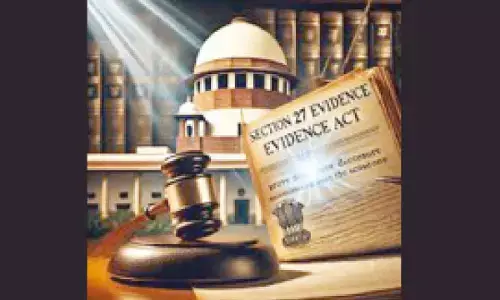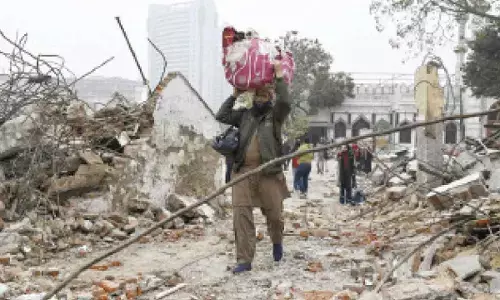Museum visits students: Youngsters get good grasp of manuscripts on college campus

- From palm leaves (talapatralu) in Telugu and Sanskrit, specimens of original paintings from Muraqqa from Deccan and handwritten text and calligraphy, besides earliest printed texts of archaeological and historical importance displayed
- These gave students insights into the century old perspective regarding documentation and their preservation
Hyderabad: Youngsters get the first hand experience of different types of manuscripts, as ‘museum visits their college’.
From palm leaves (talapatralu) in Telugu and Sanskrit, specimens of original paintings from Muraqqa from Deccan and handwritten text and calligraphy, besides earliest printed texts of archaeological and historical importance are being displayed. These gave students insights into the century old perspective regarding documentation and their preservation.
About 40 students who are part of the college’s ‘Heritage Club' took active part in explaining the significance of the manuscripts on display on their campus. The Indian National Trust for Art and Cultural Heritage (INTACH) which had signed MoU with the Bhavan’s Vivekananda College of Science, Sainikpuri, helped organise the event on the campus, in association with Manuscript Oriental Library – Osmania University and Salar Jung Museum on Monday.
Members of the club wished that all historical records are preserved by the government. “It is important that we know our past and should not allow history to fade away. I am fortunate that our college provided a chance to learn about history, rather than going all the way to the museum,” said Sai Bhargav, B Com (final) who has a passion for making sketches of Hindu gods.
Mender of TS Government Oriental Manuscripts Library and Research Institute, J Satyanarayana, explained that as part of this ‘awareness camp’ to students two types of manuscript paper and palm leaves are exhibited.
“These palm leaves are 350 years old, while those printed are 150 years old. The language used is Sanskrit and Telugu and mostly religious texts. While some authors are identified, others are anonymous,” he explained.
Salarjung Museum provided specimens of SiyahQulamDeccani School (paintings). “These paintings reflect the culture of the time; out of curiosity artists made these paintings. These are painted with minute details,” said Dr K Meena Rani, coordinator of the Heritage Club.
Anuradha Reddy, convener of INTACH (Hyderabad chapter) who arranged the programme, said it was an attempt to encourage youth to get an idea of importance of heritage.
“We have asked the museum and institute to provide relevant manuscripts of Deccani and those reflecting local and regional in digitised format. The illustrated manuscripts are introduced for the first time so that students also get proper knowledge about different categories. We are hopeful of conducting more such events in different institutions,” she said.














